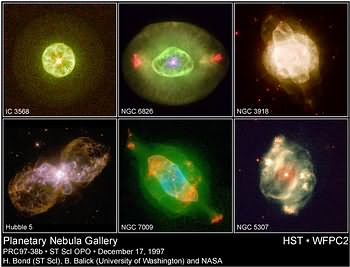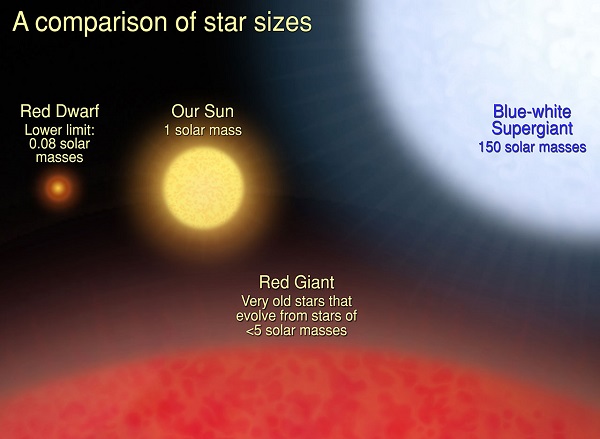A solar mass is the mass of the Sun, which is about 333,000 times the mass of Earth. It is also about 1.99 x 10^30 kg.
Most of us are familiar with the sun and know that it is huge, but did you know that it has a mass of about 2 x 10^30 kg? That’s almost impossible to imagine! And that’s just the sun.
Our own galaxy, the Milky Way, has a mass of about 2 x 10^41 kg. But there are even more massive objects in the universe. The biggest object we know of is the supermassive black hole at the center of our galaxy, which has a mass of about 4 x 10^6 solar masses.
But there are other galaxies out there that are even more massive than ours.
So what exactly is a solar mass? It’s a unit of measurement used by astronomers to describe the mass of large objects like stars and galaxies.
One solar mass is equal to the mass of the sun, or about 2 x 10^30 kg. So when we talk about the mass of the Milky Way being 2 x 10^41 kg, that means it’s about 100,000 times more massive than the sun.
But even that’s not the end of the story.
There are objects in the universe that are so massive, we can’t even begin to comprehend their size. For example, there are quasars that are thought to have a mass of about 10^9 solar masses. That’s a billion times more massive than the sun!
So the next time you’re looking up at the night sky, remember that the objects you’re seeing are just a small fraction of the massive objects that exist in our universe.
How Many Earths Would It Take To Equal The Mass Of The Sun? | Planet Comparison
What is the Value of 1 Solar Mass?
A solar mass is defined as the mass of the Sun, which is about 2×10^30 kg. In terms of the value of 1 solar mass, it is about 4.6×10^30 kg. This value comes from the fact that a solar mass is about 333,000 times the mass of the Earth.
How Many Solar Masses Does the Sun Have?
The sun is thought to have formed about 4.6 billion years ago from the collapse of a giant molecular cloud. Most of the mass of the cloud went into forming the sun. The sun has a mass of about 2 x 10^30 kg.
This is about 333,000 times the mass of the Earth, and about 1/1000th the mass of the Milky Way galaxy.
What is a 1 Solar Mass Star?
A star is classified as a 1 solar mass star if it has the same mass as our sun. These types of stars are incredibly common and make up about 60% of all stars in our galaxy. They are also some of the longest-lived stars, with a typical lifespan of 10 billion years.
Although they are very stable, 1 solar mass stars can still go through changes during their lifetime. For example, they can become red giants when they run out of hydrogen fuel to fuse in their cores.
How Do You Find Solar Mass?
There are a few different ways to find the solar mass. One way is to use the mass-luminosity relationship. This relationship states that more massive stars are more luminous.
So, by measuring the luminosity of the sun and comparing it to the luminosity of other stars, we can estimate the solar mass.
Another way to find the solar mass is to use the orbital period of planets orbiting the sun. By measuring the orbital period of a planet, we can calculate the mass of the sun using the relationship between mass and orbital period.
Finally, we can also find the solar mass by measuring the sun’s gravity. By measuring the sun’s gravity, we can calculate its mass using the relationship between mass and gravity.
So, there are a few different ways to find the solar mass.
Which one you use will depend on what information you have available.

Credit: www.atnf.csiro.au
Solar Mass to Kg
The solar mass is the standard unit of mass in astronomy, equal to the mass of the Sun. It is used to measure the masses of other stars, as well as galaxies and clusters of galaxies. The solar mass is equal to 1.99 × 10^30 kg, or about 333,000 times the mass of the Earth.
1 solar mass = 1.99 × 10^30 kg
The solar mass is used to measure the masses of other stars, as well as galaxies and clusters of galaxies. For example, the mass of the Milky Way galaxy is estimated to be about 1.3 × 10^11 solar masses.
The mass of the Virgo cluster of galaxies is estimated to be about 2 × 10^15 solar masses.
The solar mass is a convenient unit because it is about the same as the mass of the average star. Most stars have a mass close to the Sun’s mass, so the solar mass is a good unit for measuring stellar masses.
Astronomers also use the solar mass to measure the masses of galaxies and clusters of galaxies.
Solar Mass Calculator
Solar mass is the mass of the sun. It is used to calculate the mass of other objects in the solar system, such as planets and asteroids. The solar mass calculator allows you to calculate the mass of the sun based on its radius and luminosity.
The solar mass is 1.99 x 10^30 kg. The sun’s radius is 695,700 km. The sun’s luminosity is 3.846 x 10^26 W.
To calculate the mass of the sun, you need to know its radius and luminosity. You can use the solar mass calculator to find these values.
The solar mass calculator will give you the mass of the sun in kilograms.
The sun’s mass is 1.99 x 10^30 kg.
How Much is a Solar Mass in Tons
A solar mass is the mass of the Sun, which is about 2 x 10^30 kg, or 4.6 x 10^30 tons. So, one solar mass is about 4.6 x 10^30 tons.
Conclusion
A solar mass is defined as the mass of the Sun. It is used as a unit of measurement in astronomy. One solar mass is equal to 1.99 x 10^30 kg.
The average density of a solar mass is 1.41 x 10^3 kg/m^3.
